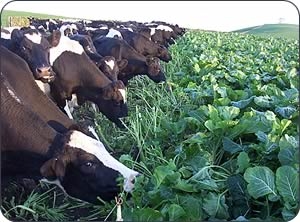
A milder week after the cold snap is a brief respite after the wild weather but managers will now be focused as winter is not far away.
Those that have dried off will have sorted cows on body condition score and prioritised feed volumes and quality to ensure targets are reached by calving.
Advisers remind managers that they will not achieve high growth rates close to calving so time and planning is important from the start.
Big pugging issues arrive in the Waikato after more rain, and advisers suggest some management changes to minimise pasture damage.
Feeding supplements before shifting to a new break to try and keep animals calm and settled on the new pasture, is one technique that will help reduce damage.
Some time can be spent in lanes at no cost to feed intakes if animals are fed high quality feed daily.
Stocks of feed barley and feed wheat have fallen sharply and with it prices have lifted as demand for supplements is strong after a poor maize harvest due to wet conditions.
There is still a heavy cow cull at the processing plants and this demand is expected to continue through until the end of May.
The market news of the week was Fonterra’s forecast lift for this year by 15c/kg ms and an optimistic $6.50 for the coming season.
The market was surprised at the strength of both forecasts and this will have lifted farmers’ spirits going into the winter.
The 70% of Fonterra farmers that borrowed of the company in the spring due to very tight cashflows will need to repay their loan as the $6 threshold has been reached.
Synlait followed that $6.50 forecast this week, and all others will need to respond if they want to keep their market share of milk volumes.
Industry officials are worried that new immigration regulations could cause staff shortages within the sector, although, dispensations have been allowed to some southern foreign workers.
The dairy women’s network is running calf rearing seminars over the winter break so new entrants can lift their skills for this important spring job.
Bayer have developed a test to identify whether antibiotic resistance is present and this will be especially important to improve systems for mastitis control.
Dairy cow numbers rose by 166,000 last year according to NZ Statistics figures, and this rise surprised the market ,after the tough financial position the sector has been experiencing and the high numbers of cows culled.




We welcome your comments below. If you are not already registered, please register to comment.
Remember we welcome robust, respectful and insightful debate. We don't welcome abusive or defamatory comments and will de-register those repeatedly making such comments. Our current comment policy is here.